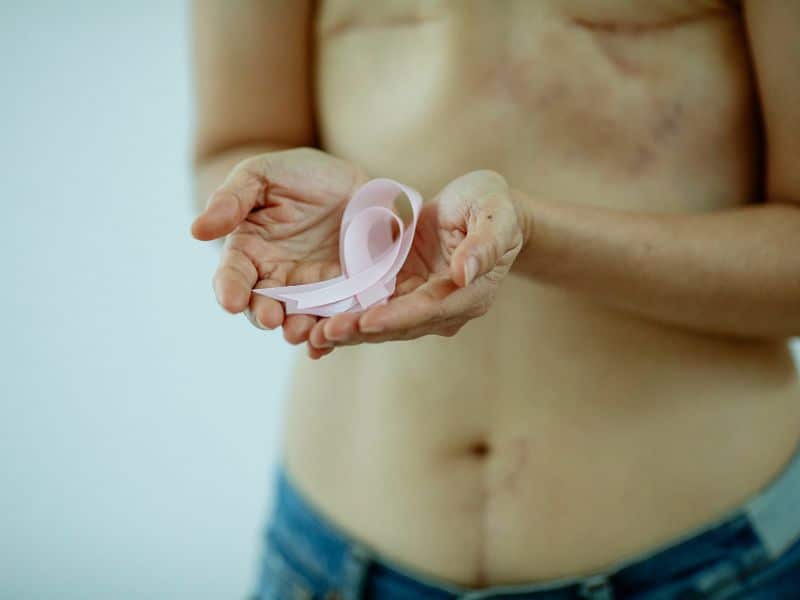Breast Augmentation Risks & Potential Side Effects
Written by: Dr. Dahlia Rice. Posted in: Blog

Although breast augmentation risks are very rare, they can occur. And as a patient planning for breast augmentation surgery, it’s important for you to know about them.
Naturally, your plastic surgeon will go over the potential risks of breast augmentation at your consultation appointment and at the discussions you have leading up to surgery. Sometimes, these vary depending on your personal risk factors or the types of breast implants you’re planning to get. However, most of the time, all patients who are good candidates for breast augmentation have basically the same potential risks.
Table of Contents
TogglePotential Risks & Side Effects After Breast Implant Surgery
Infection
Very rarely, the breast tissue surrounding your implants may become infected following surgery. Signs of such an infection include breast pain, chills, intense redness on the breast, a high fever, new incision drainage, and uneven swelling.
Bleeding
Also known as a hematoma, ongoing bleeding following breast augmentation surgery can sometimes occur. This is why we like to see you very shortly after surgery. We’re able to check for any bleeding coming through your incisions and correct the issue if it is present.
Bleeding after breast augmentation surgery typically occurs because a blood vessel begins to leak in the breast implant pocket. A drastic increase in swelling can sometimes be an additional sign that ongoing bleeding may be a problem.
Capsular Contracture
Whenever an implant of any kind is put into the body, a capsule of scar tissue is naturally formed around it. Breast implants are no different. Your body will naturally form a soft, thin, and supple scar tissue capsule around each implant during the initial recovery period.
If that capsule becomes hard and thick, however, this is called capsular contracture. In this case, sometimes an oral medication can help. Otherwise, the implant and capsule would need to be removed, and revision may be necessary.
Breast Implant Displacement
Breast implants can sometimes migrate or change position over time. Again, this is rare, but it can occur, especially if the pocket created for the implant is too large. Most of the time, displacement of implants is very noticeable (you can look at displaced breast augmentation before and after photos to see examples).
There are various ways that implants can migrate. They may move toward each other (symmastia). They can move away from the center of your body (lateral displacement). Or they can settle too low on the chest in some cases.
Longterm Risks of Breast Implants
Breast Implant Rupture
First and foremost in breast implant safety is trying to reduce the risk of ruptures and ensuring the use of only FDA approved breast implants. Although it is rare for breast implants to rupture, it can sometimes occur. With saline implants, ruptures can typically be spotted immediately because the implant will visibly deflate.
With silicone implants, it can be somewhat harder to see the change. Therefore, most patients with silicone breast implants (silicone gel filled implants) must have regular imaging scans to ensure that a rupture has not recently occurred.
Breast Implant Illness (BII)
Some people confuse breast implant illness with breast cancer, Breast Implant-Associated Anaplastic Large Cell Lymphoma (BIA ALCL) or Breast Implant-Associated Squamous Cell Carcinoma. The two are not at all the same.
Breast implant illness includes a range of symptoms that cannot be attributed to any other medical condition. Patients sometimes complain of muscle and joint pain, breast pain, fatigue, confusion, trouble concentrating, general soreness, trouble breathing, trouble sleeping, and other symptoms.
There is no strict definition for this condition. The diagnosis is often based on the fact that breast implant removal alleviates all or most of the symptoms for the patient.
FAQ: Breast Augmentation Risks
Is breast augmentation a high risk surgery?
All surgeries come with risks, including breast surgery. Breast augmentation has its own risks, such as bleeding, infection, capsular contracture, and implant displacement. Symptoms of these complications usually do not present until the breast augmentation recovery period. When your surgery is performed by a skilled, board certified plastic surgeon, however, these complications are very rare.
What are the risks of second breast augmentation?
Patients may undergo a second breast augmentation surgery for a number of reasons. Often called breast augmentation revision, sometimes patients need this surgery because they have a medical complication (capsular contracture, breast implant illness, etc.). But other times, it’s for aesthetic reasons (a change in breast size preference, a new desired shape, etc.).
No matter the reason, most revision or second breast implant surgeries have a similar set of risk factors as initial surgery. The major difference in most cases would be the added challenge of scar tissue. This can sometimes make a second surgery more complicated and slightly longer.
Are there fat transfer breast augmentation risks?
The risks of fat transfer breast augmentation include bleeding, infection, fat necrosis, and fat reabsorption. These are rare.
How much does breast augmentation cost?
It’s best to schedule a consultation appointment to determine your estimated breast augmentation cost. Your final price will be based on your surgeon’s fee, the scope of your procedure, where you undergo surgery, anesthesia, and the type of breast implants you choose.
Arrange for a Breast Augmentation Consultation Appointment
Board certified plastic surgeon Dr. Dahlia Rice in Chicago performs breast augmentation, including breast reconstruction after breast cancer, for patients at her Chicago practice.
Find out if you’re a good candidate for breast implants and get more information on risk factors and potential complications by booking a consultation appointment today.


